Wintering the Pacific with Lewis and Clark
In southwestern Washington where the mighty Columbia River meets the Pacific Ocean are a string of sites that no historical tourist or lifelong resident of our state should leave unvisited. Between Hungry Harbor and the Long Beach Peninsula are three places that hold not only state but national significance. They are the three places that Captain Meriwether Lewis, Lieutenant William Clark and the entire Corps of Discovery expedition met with some of the fiercest weather conditions of their 3,700-mile journey.
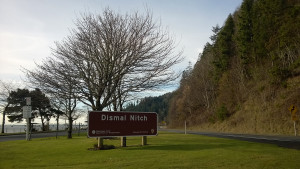 The first stop is Dismal Nitch, a place where – 210 years ago—the historic expedition was pinned down by wind and rain for six days. It’s now a Department of Transportation rest area and looks exactly like you’d expect. Aside from the standard restrooms, drinking fountains and pet area, Dismal Nitch has a covered billboard detailing the different aspects of the entire Lewis and Clark journey. But a few paces west of the rest area lies a relatively new monument that adequately commemorates the importance of the stop. It’s a beautifully made relief sculpture in bronze, and is absolutely worth a stop just to admire the artist’s work.
The first stop is Dismal Nitch, a place where – 210 years ago—the historic expedition was pinned down by wind and rain for six days. It’s now a Department of Transportation rest area and looks exactly like you’d expect. Aside from the standard restrooms, drinking fountains and pet area, Dismal Nitch has a covered billboard detailing the different aspects of the entire Lewis and Clark journey. But a few paces west of the rest area lies a relatively new monument that adequately commemorates the importance of the stop. It’s a beautifully made relief sculpture in bronze, and is absolutely worth a stop just to admire the artist’s work.
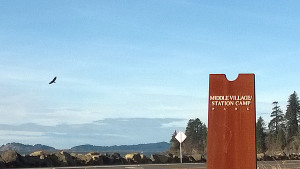 Just a few miles west is a place known both as Station Camp and Middle Village. The Chinook Indians had existed from the Pacific coast to many miles up the Columbia River, and their central meeting place just happened to be where the Lewis and Clark expedition made their last camp in Washington. The Chinooks had migrated to their winter village at the time, so the group found the area unoccupied. Spending just 10 days at Station Camp, it’s foothold in American history was secured when Lewis and Clark made day trips from there to lay eyes on the Pacific Ocean for the first time.
Just a few miles west is a place known both as Station Camp and Middle Village. The Chinook Indians had existed from the Pacific coast to many miles up the Columbia River, and their central meeting place just happened to be where the Lewis and Clark expedition made their last camp in Washington. The Chinooks had migrated to their winter village at the time, so the group found the area unoccupied. Spending just 10 days at Station Camp, it’s foothold in American history was secured when Lewis and Clark made day trips from there to lay eyes on the Pacific Ocean for the first time.
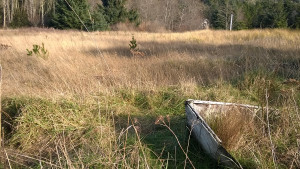 The site today is an amalgam of Native American, Corps of Discovery and early pioneer history. Not five years after the famous explorers left Station Camp, the area was homesteaded and became known as McGowan. In fact, a Catholic church from the McGowan days still stands and has been restored by area parishes. They still have mass there once a week during the summer months. Station Camp is also the place where the entire group voted on whether to spend winter on the north or south side of the river. Sacagawea and York, the only African-American, were both allowed to vote. That moment is believed to be the first time in American history that both a black man and a woman voted equally with white men.
The site today is an amalgam of Native American, Corps of Discovery and early pioneer history. Not five years after the famous explorers left Station Camp, the area was homesteaded and became known as McGowan. In fact, a Catholic church from the McGowan days still stands and has been restored by area parishes. They still have mass there once a week during the summer months. Station Camp is also the place where the entire group voted on whether to spend winter on the north or south side of the river. Sacagawea and York, the only African-American, were both allowed to vote. That moment is believed to be the first time in American history that both a black man and a woman voted equally with white men.
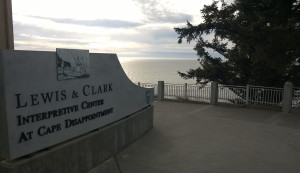 The final stop on the Corps of Discovery journey through Washington State is the Lewis and Clark Interpretive Center, perched high atop the bluffs of Cape Disappointment. There, you’ll find a plaque which belies its significance. It reads, “Welcome to the edge of the continent.” The interpretive center is filled with the pictures and stories from the expedition, artifacts, memorabilia, and more.
The final stop on the Corps of Discovery journey through Washington State is the Lewis and Clark Interpretive Center, perched high atop the bluffs of Cape Disappointment. There, you’ll find a plaque which belies its significance. It reads, “Welcome to the edge of the continent.” The interpretive center is filled with the pictures and stories from the expedition, artifacts, memorabilia, and more.
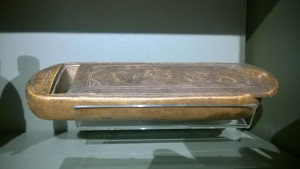 Much of the collection has been donated by the estate of Patrick Gass, one of Lewis and Clarks’ fellow travelers, who recognized early on the significance of the mission and dutifully kept and preserved his records and materials. Perhaps the most striking thing to me was a razor box owned by Gass that was believed to have been carved by Sacagawea herself. And you can see it, a mere few inches from your face, at the Lewis and Clark Interpretive Center at Cape Disappointment.
Much of the collection has been donated by the estate of Patrick Gass, one of Lewis and Clarks’ fellow travelers, who recognized early on the significance of the mission and dutifully kept and preserved his records and materials. Perhaps the most striking thing to me was a razor box owned by Gass that was believed to have been carved by Sacagawea herself. And you can see it, a mere few inches from your face, at the Lewis and Clark Interpretive Center at Cape Disappointment.
However, if inanimate historical objects don’t quite get your blood pumping – you’re in luck. On Veterans Field in downtown Long Beach, WA, a new event called “Lewis & Clark: Wintering the Pacific” will take place from January 17th through 19th.
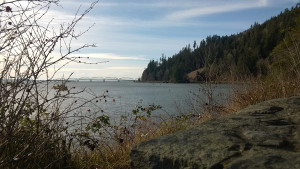 During Wintering the Pacific, Pacific Northwest Living Historians in period clothing and full character will reenact the historical interpretation of the Corps of Discovery’s activities while in Washington, including moccasin making, hide tanning, tent construction, trading, and salt making. The event is free to the public from 10 a.m. to 5 p.m. on Saturday and Sunday, and 10 a.m. to 2 p.m. Monday.
During Wintering the Pacific, Pacific Northwest Living Historians in period clothing and full character will reenact the historical interpretation of the Corps of Discovery’s activities while in Washington, including moccasin making, hide tanning, tent construction, trading, and salt making. The event is free to the public from 10 a.m. to 5 p.m. on Saturday and Sunday, and 10 a.m. to 2 p.m. Monday.
Bring your kids to Long Beach, learn some pioneering skills and have a great time reliving the history of the American West this weekend.

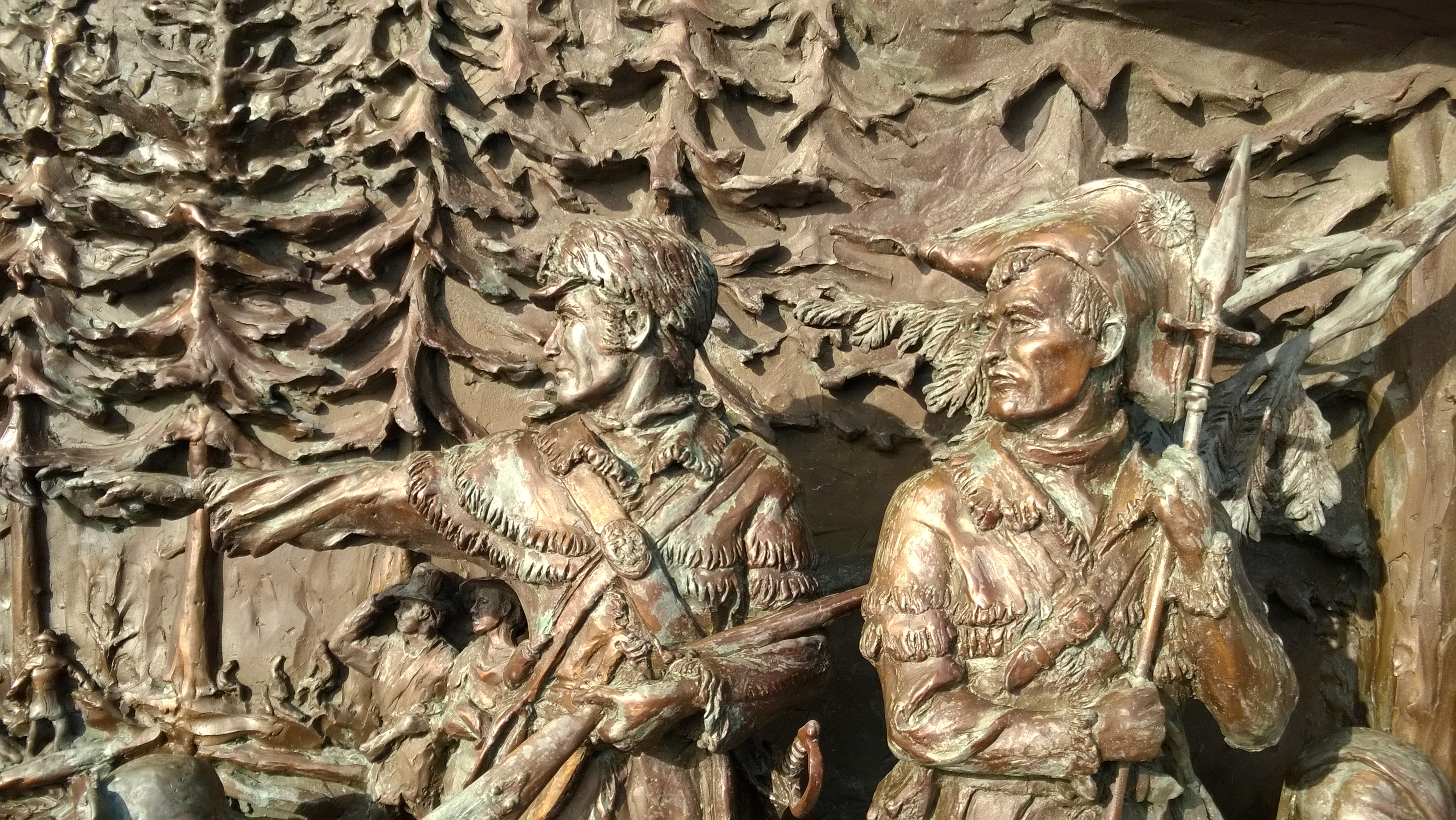
Thanks for the comment, Carole. If you’re asking about Patrick, then yes he did publish a book. You can find out more by visiting his website, http://thomasjeffersonleadership.com/store/lewis-clark-book/.
Did you ever publish your Lewis and Clark book?
Thank you, Patrick, for bringing that to our attention. As you said, it is a widely-embraced assertion that some sort of vote (or at least informal polling) took place before the Corps party headed south across the Columbia. I included it in my article because it is the position taken by the Washington State Parks and Recreation Commission which maintain the Lewis and Clark Interpretive Center and created the signage found at the different locations. You’ll also note that the article states, “That moment is believed to be…” leaving the possibility open that perhaps it was not.
Still, you raise some very interesting points that deserve further investigation. I hope your book is available through our local library so I can read more about your research. Thanks for reading and contacting us at Washington, Our Home!
Hooray for Washington’s preservation of Lewis & Clark sites! I applaud all such efforts!
May I question the “vote” you described? Quoting from my book, “Mosquitoes, Gnats & Prickly Pear Cactus: The Lewis & Clark Review,” pages 158-9, about that event on Nov. 24, 1805: “This writer questions Stephen Ambrose’s widely embraced assertion in “Undaunted Courage” that “… This was the first time in American history that a black slave had voted, the first time a woman had voted.” … It wasn’t so much a vote as an attempt to assess the preferences of the party. York and Sacagawea did participate, but the Indian didn’t make a choice. York’s choice seems to parallel Clark’s. Sixteen of the 28 “votes” were for much farther upriver, yet a minority of 12 prevailed, and their choices concurred with the captains’. This was a military company. As at Maria’s River, east of the Great Falls, the captains’ decision ruled.”
Earlier on page 158, I note, “Sacagawea’s preference was wherever edible roots were plentiful,” but there is no “vote” recorded from her.